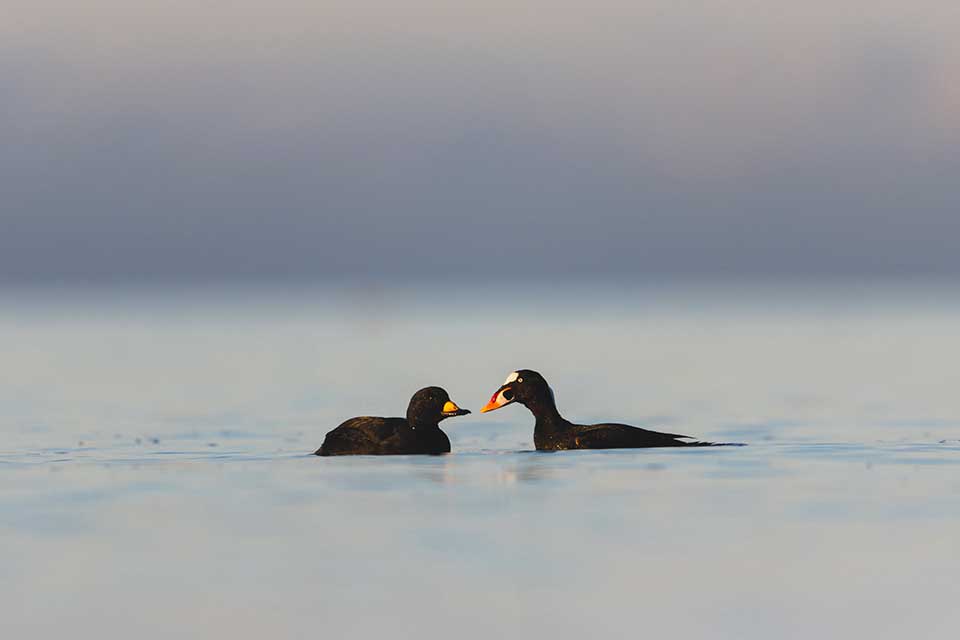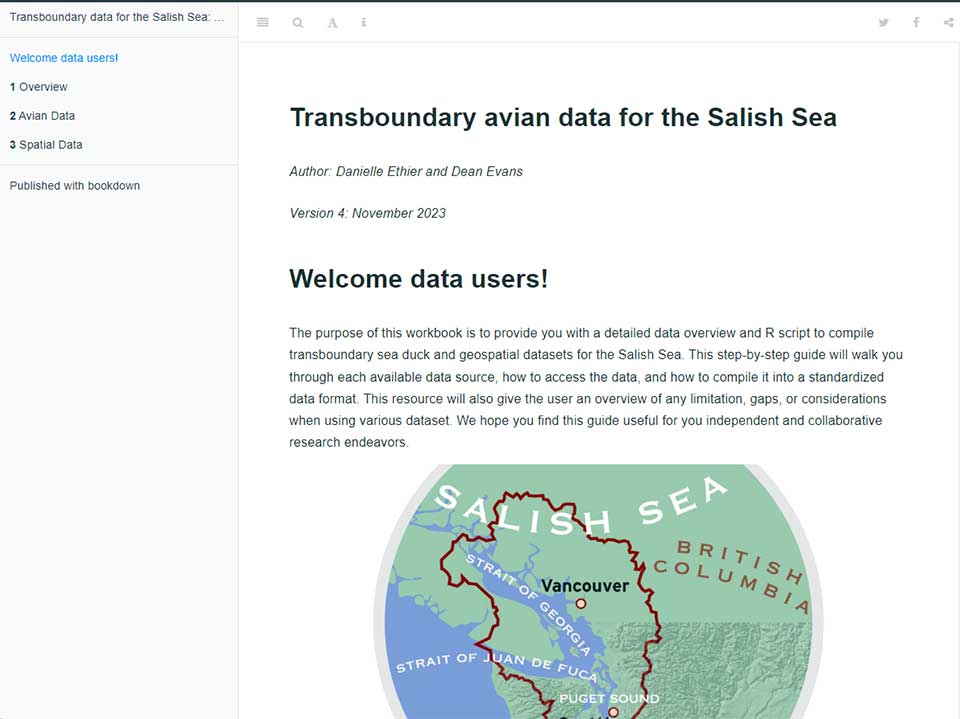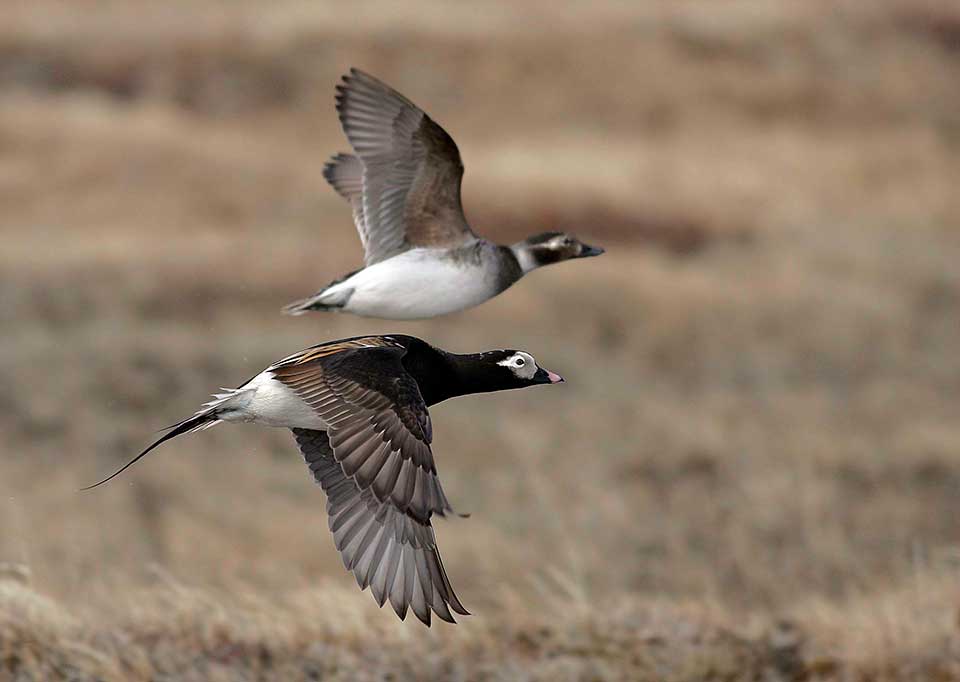
A Black Scoter and Surf Scoter. Photo: Kris Cu
In 2020, a Birds Canada paper detailing 20 years of sea duck population trends in the Salish Sea revealed some unsettling news – many species were currently or had been experiencing population declines. Between 1999 and 2019, White-winged scoters experienced a 4.3% population decline per year, while Black scoters experienced a 15% decline per year, and Long-tailed Ducks a 5% decline per year in the same period. The challenges of understanding and addressing these dramatic population decreases were compounded by a lack of cross-border baseline data on many of the species, making it hard to truly assess the causes and timing of the declines.
This inspired partners at Birds Canada, the University of Washington, the Washington Department of Fish and Wildlife, Audubon Washington, Environment and Climate Change Canada, Ducks Unlimited Canada, and Pacific Birds Habitat Joint Venture to work together to address some of these gaps through a new project to increase usage and access to relevant sea duck data. The team, led by Birds Canada, hopes by compiling and merging avian and environmental data from across the Salish Sea, they can improve coastal and marine habitat management for sea ducks.
In addition to threats from human development, shipping, climate change, and habitat loss, putting the populations at risk, many of the species are significant as harvest and cultural species to peoples across Canada and the US. The study focused on six species of sea ducks: the Black Scoter, the White-winged Scoter, the Surf Scoter, the Barrow’s Goldeneye, the Long-tailed Duck, and the Harlequin Duck.
Starting in December 2022, the project team worked to identify a variety of spatial data and avian datasets, assessing the cross-border compatibility of these datasets in order to compile them and create new spatial datasets spanning the Salish Sea. This culminated in a comprehensive database to host the data layers and detailed explanations of the datasets and their potential usage. They also worked together to identify data gaps, limitations, and future needs.

Photo from the GitHub webpage where the data can be accessed
The new GitHub webpage where the data can be accessed also has details on how the data were collected, and best practices for applying the data layers. In addition, the project team organized a workshop to share the data with managers and biologists in both countries. The team hopes the new website and the workshop will increase the usage and accessibility of these highly valuable, international data – to those in governments, ENGOs, universities, and students.
A second portion of the project focused on the application of this transboundary data to address real-world questions, specifically, the impact of Bald Eagle presence on sea duck behavior in the Salish Sea. The resulting manuscript, “Bald Eagle and Priority Sea Ducks Interact Over Space and Time in the Salish Sea: A Transboundary Perspective” is currently in review and revealed that Bald Eagles overlap with priority sea duck species more often than by chance in the Salish Sea despite finding no evidence of impacts on sea duck occurrence.

Long-tailed Duck pair. Photo: Ted Swem
Ultimately, they hope the new data and increased accessibility will encourage scientists to generate new hypotheses on sea duck distribution and inspire research. Future study topics could address changes in sea duck populations, the effects of shipping routes and policy changes on sea ducks, and species distributions during key life stages.
The data can be accessed here, in addition to resources on the NatureCounts platform created by Birds Canada. The researchers strongly encourage students interested in using the data to contact them regarding research and project opportunities.
